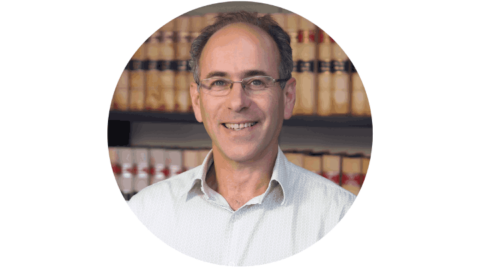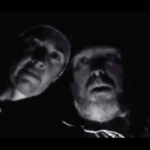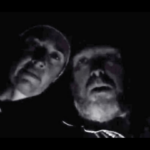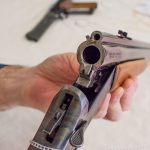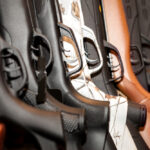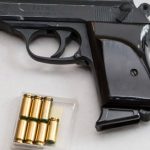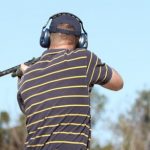The Wieambilla Shootout Exposes Systemic Issues, Warns Gun Control Australia’s Roland Browne
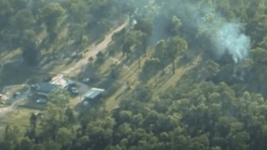
In the wake of the Wieambilla killings, Gun Control Australia has called on the Palaszczuk government to release the information it’s withholding relating to the recent massacre that occurred at a remote property in the Queensland Western Downs region.
On 12 December, four Queensland police officers attended the Wieambilla property where Gareth and Stacey Train lived, to check on whether Gareth’s brother Nathaniel was present at the property and, as later revealed, follow up on an outstanding warrant issued in his name.
All three Trains, who were dressed in camouflage gear, fired upon the police, killing two of them, as well as shooting dead a neighbour who turned up to check on the commotion.
GCA is calling for the release of withheld information so that the public can have an informed debate about gun control and how to improve it. And it’s joined the Queensland government and the state police union in demanding that a national firearms database be established to reduce gun harms.
Triggering change
A now-deleted YouTube channel run by the Trains revealed that they were influenced by far-right ideologies, including the sovereign citizens movement, as well as Christian fundamentalist thought.
The Trains homemade video clips posted to the channel further showed that they believed the Port Arthur massacre was a false flag incident, meaning it was designed by the government to provide an excuse to disarm the Australian public.
The 1996 Port Arthur massacre, however, was no lone incident, but rather it was the most severe in a series of gun massacres that had been taking place in this country since the mid-80s, which included the 1987 Hoddle Street massacre and the mass shooting at Sydney’s Strathfield in 1991.
Port Arthur led then PM John Howard to establish the 1996 National Firearm Agreement, which established a new licensing and registration system. This includes a number of gun categories, which ensure those holding firearms licences can still be restricted from owning certain types of weapons.
Reducing the harms
Since Gun Control Australia called on the Queensland government to release the information around the guns use involved in the Wieambilla shootout, which eventually saw all three Trains killed by police, some details have been released.
This has included that the warrant issued in relation to Nathaniel Train involves an incident where he illegally crossed the border between NSW and Queensland in December 2021, which involved him dumping a couple of firearms at the border and carrying others with him into the northern state.
Sydney Criminal Lawyers spoke to Gun Control Australia vice president Roland Browne about the reasons a national firearm database is needed, the systemic issues that the recent Queensland killings expose, and other gun control concerns that still need to be addressed in the community.
Gun Control Australia has pointed out that the Wieambilla shootout has left a lot of unanswered questions regarding firearm use.
GCA is calling on the state government to release the information it’s currently withholding to inform public debate.
Roland, can you talk about the importance of the public debate and why hampering it via withholding of details is problematic?
The government has released a bit of information since our media release was put out. They’ve now said that at least one of the guys had a gun licence, that three of the guns were registered to him and there were also a number of guns that weren’t. So, we know that much.
But coming back to the public debate, there are a couple of dimensions to this. Firstly, firearm control is a public health issue. It’s about regulating an instrument that can cause harm.
The regulation of an instrument like a firearm needs to be upgraded and improved all the time, because so much changes.
The public debate that’s ensuing now needs to focus on a critical question, which is how did at least one of the perpetrators have a firearms licence.
One of the requirements for a firearms licence after the 1996 Port Arthur massacre and the National Firearms Agreement is that you have to be a fit and proper person to hold a firearms licence.
So, our starting question is, how could any of these three people be fit and proper to have held firearms licences? That needs investigation as we’re facing what can best be described as a systemic problem.
I want to acknowledge that you cannot forecast who’s going to be a perpetrator of a shooting like this. But you can have your systems operating as best as possible to try and rule people like this out.
In this case, we’ve got somebody who was caught last year, trying to smuggle guns across the border into Queensland, as they were trying to avoid the laws of the time that were trying to regulate another health issue, which was COVID.
These kinds of issues should have been a red flag for a licensing authority. But at the moment, we don’t know if any questions were even asked after the report came in.
It’s an extraordinary set of affairs. He parked his car on this person’s property, and it was still there a year later.
So, somebody who got the report should have been asking questions about what this person was doing, why the car was left there and why the guns were found.
They’re indicators that something is amiss, and they need to be investigated. But it looks like that never happened.
Queensland premier Annastacia Palaszczuk and that state’s police union are calling for a national firearms database.
The implementation of such a database was part of the Howard government’s 1996 National Firearms Agreement. Yet, it has never been properly rolled out.
GCA is joining the call for a national firearms database to be established. So, in light of the recent killings, why would such a database be beneficial?
It’s a national database in the sense that it’s a national registration system for firearms.
It would mean that a firearm registered in NSW, for example, goes into a national database, and the police in Queensland can access that and know the licensing status of an individual and the status of any particular gun that is registered to that person.
Three things flow from a national registration scheme. Firstly, it preserves the integrity of the licensing system by allowing police to keep a track of which people with gun licences have which guns registered to them.
Of course, you can only have a gun registered to you that accords with the licence category that you’ve got.
Secondly, it provides a good, but not perfect, source of information to police. For example, if police get called out to a rural property, they can get onto that database and find out what guns might be registered to the people that live there.
And thirdly, a national registration system will provide everybody with a good source of information about the numbers and types of guns that are in Australia. We have no good information about that at the moment.
So, they’re the three reasons that the registration of guns is a really good development. And it’s 26 years overdue.
The Trains were adherents of the sovereign citizen movement that’s tied up with a broader rise in the far-right. It’s become more prominent over the pandemic period, and ASIO has been warning about this.
Obviously, the Trains have raised concerns around gun control, but how does GCA consider the rise of the far right as a whole in relation to guns in the community?
It’s a good question that you’re asking, but at the end of the day, whether a person is likely to or does commit an act of domestic terrorism like this is connected to the far right, or whether they have no political views and are just unhinged, doesn’t much matter.
The public health approach to firearms control is to minimise the access of people to firearms. So, we have a firearms licensing system, and people can only have the guns they are fit and proper to hold.
We have a registration test to ensure that, and we have bans on rapid fire and high-powered rifles and shotguns, so that they’re difficult to get hold of.
We’re also meant to have an effective storage system to ensure that firearms are not stolen and find their way into the hands of people who shouldn’t have them.
The 1996 system of regulation is aimed at reducing firearms misuse and it doesn’t matter who it is that’s going to be the perpetrator, because it’s very hard to predict that.
The research indicates that most mass shootings are perpetrated by people who have no prior convictions, that haven’t turned up in mental health systems and tend to be loners. There is a reasonable amount of research identifying that as the profile.
These people are very hard to pick and that’s why prevention is better than cure, with restrictions on their ability to get firearms.
The Trains believed Port Arthur was a false flag incident designed to give the government an excuse to disarm the Australian public.
The growing far right in this country is influenced by the same movement in the US, which is linked to the NRA and concerns around the right to bear arms.
Is your organisation worried about the growth of this type of US-style gun rhetoric in this country?
We’ve been concerned about the influence of the US gun lobby, not just in Australia, but internationally for a long period of time. The US gun lobby is financed by corporations in that country that manufacture firearms.
There is huge money in it. The US gun lobby has turned the United States into one gigantic firearms market, and we don’t want to see that happen in Australia.
The turning point in Australia was 1996, when John Howard said that we don’t want American gun culture here.
As far as the far right goes, it is not just its influence, as there are a lot of Americans who are obsessed with the Second Amendment of the US Constitution that supposedly confers a right to bear aims. That is debatable.
What we don’t want to see, but have seen, is that kind of thinking tainting Australian views about firearms ownership.
For a long time, the debate in Australia, generated from the gun lobby has attempted to paint that people have the right to bear firearms for self-defence.
That was largely headed off at the pass by the 1996 National Firearms Agreement, because it was acknowledged that firearms ownership was a privilege and, most importantly, within this country self-defence was not a reason to own a firearm.
That is where we part company with the American lack of policy on firearms ownership. And this goes a long way to minimise guns in the community.
The US far right and its gun lobby want to normalise firearms. They want them available in schools, airports, bars, public places and, of course, the home.
Australia has gone the other way. And Gun Control Australia wants to stand up to the forces that want firearms ownership normalised in Australia.
We don’t want it to be normal.
The 1996 National Firearm Agreement was brought in not only after Port Arthur, but in the wake of a series of suburban gun massacres, including Hoddle Street and that in Strathfield.
The agreement has served to prevent these sorts of incidents that were becoming more common.
In 2017, a new agreement was established. At the time, then Australian Greens Senator Lee Rhiannon remarked that it had served to water down gun controls.
So, overall, how would you say gun controls are operating in this country at present? And are there key issues, besides the national firearms database, that need to be addressed?
Things did get watered down in 2017, under the Turnbull government.
The national registration scheme that was part of the 1996 agreement was abandoned, and instead they came up with the idea of an Australian information system for firearms, which has never worked.
There are a lot of other areas where the 1996 agreement has not actually been implemented in the first place. For example, the minimum age for ownership of a firearm was 18, but that’s been subverted by the creation of minors permits. So, kids can use guns.
There are various other areas where, for example, restraint orders or apprehended violence orders were to see the termination of gun licences and that has never been implemented across the board.
Then there are other areas that were introduced and have been backed away from. One of those is the requirement for a 28 day cooling off period after the purchase of a second or subsequent gun. That has been done away in Victoria, Western Australia and also, in Tasmania.
There is a lot of work to do to see uniform enactment of these laws. The 1996 agreement was an agreement to introduce uniform national gun laws, but they’re found wanting in their implementation and, as I said, various states have watered them down.
Another area that’s important too in NSW is allowing silencers, which are prohibited under the 1996 agreement.
The Commonwealth has taken its eyes off the road on this and has let the states go their own ways. And we are wanting to see this national government take charge of the debate and move towards better implementation of the original agreement.
Also, firearm storage needs to be improved across Australia. There are still way too many guns being stolen. With 3.7 or 3.8 million guns in community hands, we need very effective storage, and we don’t have that yet.
So, there is a lot of work to be done. There always is and always will be.

And lastly, Roland, you mentioned that Gareth Train was a licensed gun owner and questioned how someone like him was able to obtain a licence.
So, what is the process when it comes to obtaining a gun permit? Does somebody simply receive one and renew it like a driver licence?
You apply for a firearms licence, and, under the NFA, that’s meant to be reviewed every 5 years. However, Queensland is in breach of this requirement and is conducting gun ownership reviews every 10 years.
So, in terms of the process, you get your licence and you’re meant to renew it after that period has expired.
The aim of the fresh assessment is an acknowledgement that people’s life circumstances change and so does their fitness and need to own a firearm.
What happened with Train? Who knows how he got the gun licence in the first place or if he has been reviewed since he first got a licence?
The system is wanting. And that’s part of the review of the licensing system that we would like to see, as it’s much better to assess people’s suitability to own a gun and to have those assessments more frequently.
Main photo: Wieambilla police shootings by ABC News is licensed by CC BY SA 4.0
